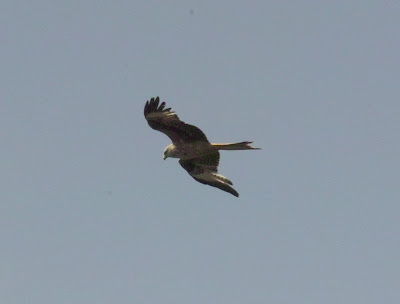 |
| Black-headed Gull |
Yesterday I spent almost the whole day at the RSPB reserve at Minsmere in my home county of Suffolk. There have recently been some significant developments on the reserve and I had been hearing some negative comments about what was going on so i decided to look for myself. The shop and reception area and restaurant have been extended to cope with the large number of visitors visiting the site. With the exception of an extraordinary photo of a woman's backside on the volunteer display nothing struck me as unusual. The Children's Discovery area is spectacular and essential to introduce our youngsters to the wonders of nature Then thing that also struck me was the enormous sluice on the north wall. As a volunteer in the 1960's I helped put in the original sluices known as "the Twopenny" and the "Threepenny" based on their cost and the latest mechanism looks far more efficient. The new Island Mere hide is fantastic and ensures that more people can see what is going on. My only criticism was of the people inside who talked too loud generally made too much noise but the structure is superb in every way.
 |
| The new Island Mere hide |
I was with my brother-in-law Trevor and he has a basic interest in birds and both of us were not to be disappointed by our visit. On leaving the Centre we could see Stone Curlew on the Brecky fields from the north wall something I have not seen here for a number of years. We moved down to the beach to the chorus of Cetti's Warblers and Reed Warblers and when reaching the sea noisy Common and Little Terns. Looking from the East Scrape hide we picked out Sandwich Terns, Common Sandpiper and a couple of Mediterranean Gulls. Shovelers, Gadwall and and several Avocets were also visible the latter one of the special birds of Minsmere. All of this in a colony of hundreds of Black-headed Gulls.
 |
| Avocet at Minsmere |
We carried on eventually moving up the Central Path. We bumped into several old friends. Volunteers John Grant, Phil Parker and Derek Eaton as well as Wildlife Artist Peter Partington. We stopped a while to look at the Konik horses grazing the reedbeds. This is a breed I introduced into the UK from Poland as a management tool for wetlands. The RSPB are now using these hardy animals on several reserves.
 |
| Konik horses at Minsmere |
After a pleasant lunch we then walked to the new Island Mere hide. My first impression was how light and roomy the structure is and how its shape gives viewing opportunities for far more people. Immediately we could see four Hobbies hunting for flying insects and a number of Marsh Harriers quartering the reeds.
 |
| Male Marsh Harrier |
A cuckoo was calling in the distance and very soon the call went up for Bittern. We moved into position and could see a Bittern creeping through the reeds. To our astonishment it suddenly moved into the open and stood up posing for some seconds before flying off across the reeds.
 |
| Bittern posing |
Bitterns are not an everyday sight and such close views left all "oohing" and "aahing" and checking their cameras. If this was not enough suddenly a stunning male Bearded Tit clung to a stem right by the hide inducing more whirring of motor-drives.
 |
| Male Bearded Tit |
"Is it always like this?" asked Trevor. Well it can be and rarely disappoints. I had a most enjoyable visit and the new developments enhance my experience rather than creating anything negative. I was fortunate to be part of the volunteer team that created this fabulous place. It is a very different place today but nothing stands still and Minsmere has to adjust to the demands of the 21st century and does so very well without harming the very thing that so many come to enjoy



















































